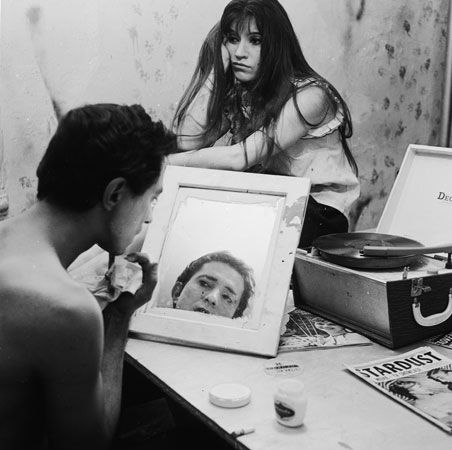Happening
Our editors will review what you’ve submitted and determine whether to revise the article.
- Related Topics:
- theatrical production
Happening, event that combined elements of painting, poetry, music, dance, and theatre and staged them as a live action. The term Happening was coined by the American artist Allan Kaprow in the 1950s. The nature of Happenings was influenced by Italian Futurist performance, where the convention of “proscenium architecture” was assaulted, where the “actors” could consist of moving lights, machinery, and the audience, and where simultaneity and noise-music were developed. Happenings were also influenced by Dada’s chance-derived assembly of found objects and events and by gestural painting, which was increasingly recognized as an event, as seen in Jackson Pollock’s drip-painting technique—free-associative gestures he made while dripping, splattering, and pouring paint on canvases placed on the ground.
Happenings were briefly taken up by a number of American Pop artists, including Jim Dine, Claes Oldenburg, and Red Grooms. The term quickly became applied to a wide variety of live art events—from the painterly gestures of Japan’s Gutai group to the street actions of Czech dissident Milan Knizak and his Aktual group. Happenings were also a part of the international avant-garde group Fluxus. Kaprow, Dick Higgins, and Al Hansen—all students at John Cage’s composition class at the New School for Social Research in New York City—performed Happenings and were associated with Fluxus, as were other artists, such as Wolf Vostell and Carolee Schneemann.
Important precedents for Happenings included Oskar Schlemmer’s Bauhaus experiments in abstract theatre, Antonin Artaud’s Theatre of Cruelty and the Theatre of the Absurd, and the simultaneous actions coordinated by John Cage at Black Mountain College in 1952, which included the poet Charles Olson, the dancer and choreographer Merce Cunningham, and the artist Robert Rauschenberg, who went on to create a number of Happenings throughout the 1960s. In France, Yves Klein’s choreographed installation and his sale of Zones of Immaterial Pictorial Sensitivity provided more examples of ethereal and time-based art, as did Georges Mathieu’s theatrical demonstrations of painting, which he took to Japan.
Even during their short heyday, Happenings never shared a common cause or style. Despite occasional aesthetic and structural similarities, their impetus ranged from the French artist Jean-Jacques Lebel’s politically motivated guerrilla theatre to Red Grooms’s expanded vaudeville. It is clear, however, that all shared a desire to operate in the much-discussed gap between art and life. Happenings as a descriptive term lost currency in the late 1960s, giving way to specific categories, such as body art, and by the early 1970s to the general label performance art.











